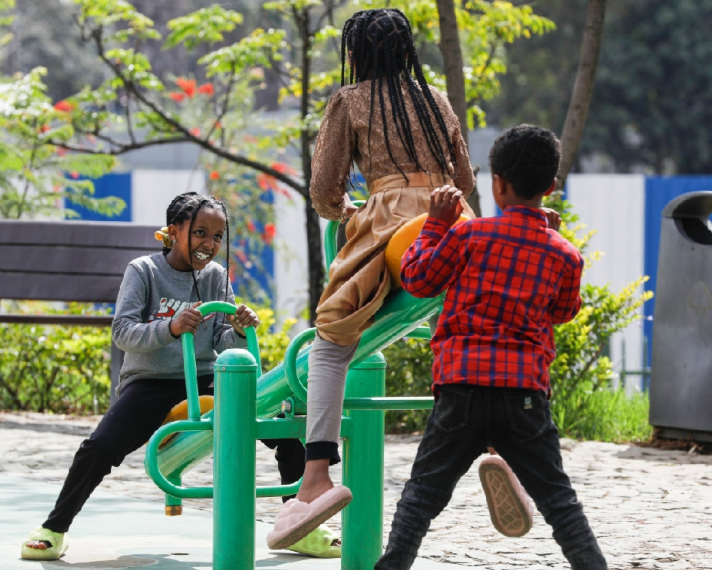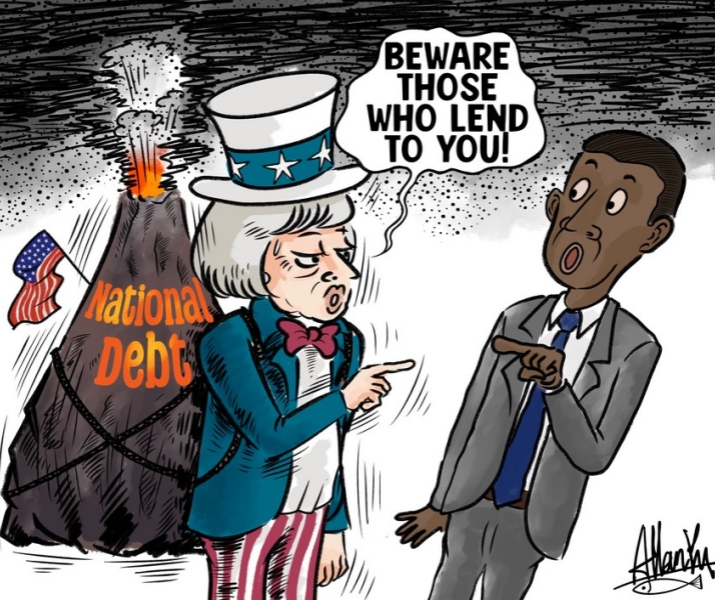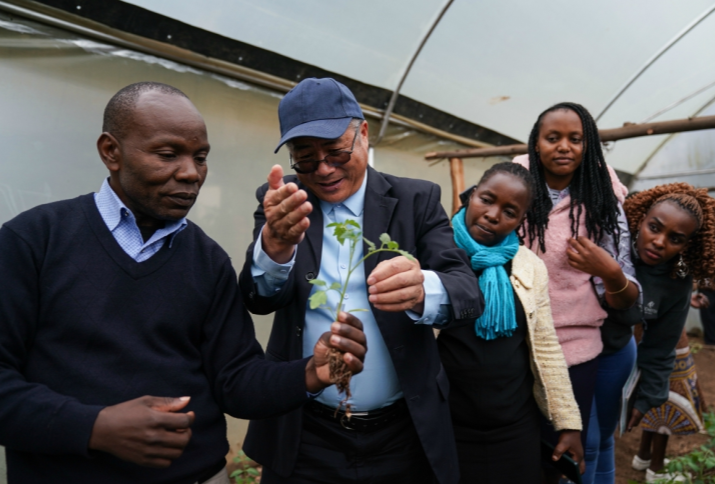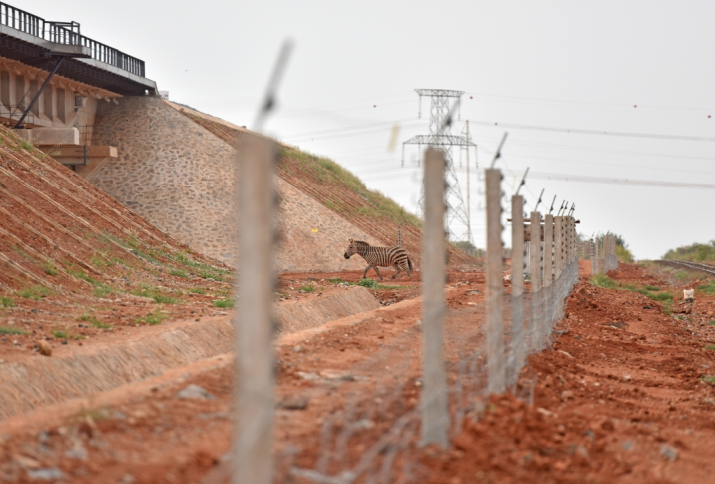|
||||||||||
| Home Top News Economy/Tech Culture/Sports China in Foreign Eyes Green Development Videos Intangible Cultural Heritages |
|
||||||||||
| Home Top News Economy/Tech Culture/Sports China in Foreign Eyes Green Development Videos Intangible Cultural Heritages |
| ChinAfrica |
| A Mutually Beneficial Relationship |
| Why Western doubts about China’s intentions behind its Africa policy are groundless |
| By Xia Yuanyuan | Web exclusive ·2024-06-03 |
Amid changes unseen in a century, China-Africa cooperation is facing greater external risks and challenges. To gain more influence in Africa, Western powers are earnestly looking for ways to undermine China’s cooperation with Africa. They are doing so by, on one hand, raising their own investments and intensifying their engagements to gain a greater say on the continent, and on the other hand, creating negative perceptions about China by spreading false narratives and baseless claims such as colonisation and debt trap, and questioning China’s intentions.
But facts show that such claims are totally groundless and a result of the West’s desire to hamper China’s development and reduce its global influence.

Children play at the Friendship Square in Addis Ababa, Ethiopia, Feb. 18, 2024. In Addis Ababa, the capital of Ethiopia, the Friendship Square stands as a popular destination for citizens seeking leisure, especially during holidays. Constructed with the support of Chinese enterprises, it has become a favorable spot for quality time with friends and family (XINHUA)
Misconception One: The BRI is a debt trap
As active participants and supporters of the Belt and Road Initiative (BRI), African countries have benefitted immensely from the implementation of programmes under the BRI. Despite the achievements, some Western countries think that the BRI is a debt trap for African countries. But practice shows that such thinking is baseless.
First of all, no country or region is forced to join the BRI. Countries and regions can determine whether to be involved in a project based on their needs, interests and development goals. When a project is launched, the terms of cooperation is negotiated among all related parties, and the agreements clearly state the rights and obligations, goals, scope, implementation modalities and timeline of the project.
The idea of debt trap presupposes that African countries sign loan agreements without knowing any detail or terms. However, all agreements between China and African countries are settled after careful consideration and rounds of talks, according to Rwandan Ambassador to China James Kimonyo. China usually spends three years on investigation and analysis of factors like local conditions before issuing a loan to an African country, so that the money would be directed to projects that generate considerable socioeconomic benefits.
For another, China is not the biggest creditor to African governments. Data published by the World Bank show that multilateral financial institutions and commercial creditors held nearly 80 percent of foreign debt owed by 49 African countries with a total value of $696 billion in 2020, and they create the highest debt repayment pressure on African countries.
According to a report released by UK-based Debt Justice in July 2022, just 12 percent of African governments’ external debt was owed to Chinese lenders, compared to 35 percent owed to Western private lenders at the end of 2020. Their calculations also showed that the average interest rate on private sector loans was 5 percent, compared to 2.7 percent on loans from Chinese public and private lenders.
China has also taken many measures to help African countries relieve debt. It issued the Debt Sustainability Framework for Participating Countries of the BRI in 2019 that is aimed at providing solutions to debt management for African countries. China also took part in the G20’s Debt Service Suspension Initiative in April 2020. According to the African Development Bank, the total volume of debt suspended by China is much higher than that by the G7 countries.
Since 2013, China has helped to build over 6,000 km of railways, 6,000 km of highways and 80 large-scale electricity generation and related facilities in Africa, which have facilitated local economic development.
All in all, the idea of debt trap is politically motivated, and is designed to impede the progress of the BRI and broader China-Africa cooperation. However, Western propaganda has proved to be counterproductive. Instead of shrinking the cooperation under the BRI is growing.

Misconception Two: African countries are showing less political affinity to China
In 2023, French think tank Asia Center reported that China-Africa relationship in the 21st century as being unbalanced. It was described as one between employers and employees, and between creditors and borrowers. But shouldn’t it be the African people who have the most say on what this relationship is like?
According to the African Youth Survey 2022 by the Ichikowitz Family Foundation, a think tank based in Johannesburg, South Africa, 77 percent of the Africans see China as the most influential foreign power active in Africa, in comparison to the US or Europe. Ivor Ichikowitz, chairman of the Foundation, said that although US and Europe claim China’s presence would hamper African growth and development, Africa’s young people think otherwise.
In addition, Afrobarometer, a research network that conducts public attitude surveys in Africa, reported in 2021 that China is the most influential power in Africa with 63 percent Africans surveyed believing China to be a “somewhat” or “very positive” influence in their countries. In 2022, a survey conducted by YouGov, a UK pollster, showed that people in African countries have viewed China more favourably in recent years. According to the survey, 83 percent, 82 percent, 61 percent and 57 percent of the respondents in Nigeria, Kenya, South Africa, and Egypt respectively thought China had a positive impact on international affairs.

Liu Gaoqiong (2nd L), a Chinese professor of agriculture, instructs students on tomato planting at a greenhouse in Nakuru County, Kenya, on 18 September 2023 (XINHUA)
In the past two decades, China has provided African people with many affordable goods ranging from Huawei phones and solar panels to daily necessities. “Made in China” has become a part of African society.
By comparison, the numerous US initiatives, from Obama’s Power Africa and Trump’s Prosper Africa to Biden’s Build Back Better World have delivered underwhelming performance. Power Africa, for instance, promised to generate 20,000 mw of power for 50 million Africans by 2020. But less than a quarter of the promised electricity, or 4,194 mw had been delivered by the end of 2020.
Misconception Three: China’s infrastructure projects deal a heavy blow to the environment in Africa
Some people claim China’s infrastructure projects in Africa would damage the local environment. They say the expansion and upgrading of transportation has consumed far more raw materials than what is sustainable. In 2017, a report by the World Wide Fund for Nature, an organization dedicated to conservation, said that ecological places along the BRI would suffer great losses unless conservation measures are in put in place.
But is it reasonable to link China’s infrastructure projects with environmental deterioration?

A zebra passes through the Mombasa-Nairobi Railway animal passage near the Tsavo National Park in Kenya, on 22 February 2017 (XINHUA)
First, China has taken effective actions to protect local environment when advancing projects. All projects must undergo local strategic environmental and social assessment. In early stages of planning, projects’ influence on local environment is systematically researched in case there is any accident during the implementation. All projects must both satisfy environmental regulations and fuel socioeconomic development during the assessment.
Second, Chinese experts have worked closely with African environmental regulators to ensure projects would be reasonably assessed and approved before the construction. By doing so, irreparable environmental damage can be prevented. For example, when building the Mombasa-Nairobi Railway in Kenya, Chinese construction teams set up several animal passages to allow wild animals to pass freely, thus ensuring harmony between the railway and the wildlife.
And finally, many BRI projects have been designed to advance local ecological protection and environmental governance. Since 2013, China has been working on the Green Silk Road initiative. For example, the country has significantly increased investment in renewable energy, including solar, wind and hydropower, in the BRI countries and regions to reduce their dependence on traditional fossil fuels and therefore cut greenhouse gas emissions. At the same time, water resources protection and management projects are carried out to ensure water security and the stability of the whole ecosystem.
| About Us | Contact Us | Advertise with Us | Subscribe |
| Copyright Beijing Review All rights reserved 京ICP备08005356号-5 京公网安备110102005860号 |